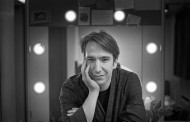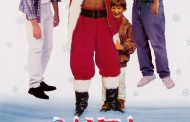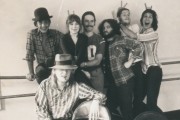 There’s been a lot of talk — including by us — about how big of a disaster The Lone Ranger will end up being for Disney (here is my lengthy, negative review). I’ve read quite a bit of Monday-morning quarterbacking (including this lengthy piece in The Hollywood Reporter) trying to figure out what exactly went wrong, blaming everyone from producer Jerry Bruckheimer on down for what is certain to be a huge financial hit for Disney. One of the main arguments focuses on how “blockbuster” Westerns like Cowboys & Aliens, The Alamo, Jonah Hex, and The Lone Ranger always seem to fail. And guess what? They’re right. Even Wild Wild West, which was made when Will Smith was at his box office performance peek, under-performed. It seems that the “lesson” studios are taking away from The Lone Ranger and other recent failures of blockbuster Westerns is that audiences don’t care for Westerns.
There’s been a lot of talk — including by us — about how big of a disaster The Lone Ranger will end up being for Disney (here is my lengthy, negative review). I’ve read quite a bit of Monday-morning quarterbacking (including this lengthy piece in The Hollywood Reporter) trying to figure out what exactly went wrong, blaming everyone from producer Jerry Bruckheimer on down for what is certain to be a huge financial hit for Disney. One of the main arguments focuses on how “blockbuster” Westerns like Cowboys & Aliens, The Alamo, Jonah Hex, and The Lone Ranger always seem to fail. And guess what? They’re right. Even Wild Wild West, which was made when Will Smith was at his box office performance peek, under-performed. It seems that the “lesson” studios are taking away from The Lone Ranger and other recent failures of blockbuster Westerns is that audiences don’t care for Westerns.
That logic is deeply flawed. The real problem that Hollywood needs to realize that Westerns are not action movies. They never have been and never will be.
“But wait!” you’re probably saying. “There is a lot of action in Westerns! Think of the gunfights!” Yes, there is plenty of action in Western movies — but there is certainly a lot of action in movies like Fight Club, Saving Private Ryan, and The Godfather movies, but I don’t see many people referring to them as “action” movies like one would refer to the Terminator films or superhero movies. Like these other films, the best Westerns are marked by very few action sequences combined with a much slower pace in the character-driven scenes. Therefore, they weren’t filmed as one would film an action movie.
Don’t believe me? Think of the best Westerns of all time:
The Dollars Trilogy. The Searchers. Once Upon a Time in the West. Unforgiven. High Noon. Butch Cassidy and the Sundance Kid. Dances With Wolves. The Ox-Bow Incident. The Man Who Shot Liberty Valance. The Wild Bunch. Rio Bravo. Stagecoach. The Outlaw Josey Wales. Shane. The Magnificent Seven. John Ford‘s Cavalry Trilogy.
None of these films are marked by wall-to-wall action sequences or even numerous large-scale action sequences. In fact, some of them, like High Noon, only really have one action sequence, the climax. Most of these films are slow and methodical. Sergio Leone‘s Westerns are often held up as the genre’s best and three of his four Westerns are well over two hours long. This is the pace that four of the best recent Westerns followed: 3:10 to Yuma, The Assassination of Jesse James by the Coward Robert Ford, True Grit, and Django Unchained. You can certainly point to the ultra-violent action sequences in Django Unchained as being very much like those in action films, but there are also so many long non-action sequences in the movie that fit the classic Western mold. Another great example is the Western-inspired No Country For Old Men. Though set in the modern day, that movie is shot at the pace of a classic Western — and critics and audiences loved it. I’m not surprised at all that the Coen brothers remade True Grit three years later in a similar style.
In the early days of film many Poverty Row studios made action-oriented shorter Westerns films. There’s also a reason why these Westerns are mostly forgotten today except for those John Wayne compilation DVD sets in the Walmart bargain bin (the ones that pack 12 of Wayne’s earliest B and C-movie Westerns on 3 discs): they are terribly low-budget. However, because of their low budgets they hardly had big action set-pieces and are usually filled with long exposition sequences to fill in for scenes that the filmmakers didn’t have the budget to film. So while they’re action-oriented, it’s action on a much smaller scale than something like The Lone Ranger. If they were around today, a Poverty Row studio could probably make a hundred Westerns with the budget of The Lone Ranger. Most of them would probably all be better movies, too.
Jonah Hex is probably the most disappointing movie I’ve ever seen because Warner Bros. took the best character in Western comics — and one of my favorites in all of comics — cast a great actor in Josh Brolin in the lead, and then completely squandered that opportunity by trying to make Ghost Rider in the West. Why not follow the deliberate pace of the comics and the Leone Western films that inspired them? Because Hollywood handled Jonah Hex like a blockbuster comic book movie and not a Western instead. The result was a wretched movie that was ridiculed, then quickly forgotten.
Sure, there have been a handful of “blockbuster” Westerns that did fine at the box office, including Maverick, Shanghai Noon, and Young Guns. These aren’t terrible movies, but they certainly aren’t thought of as classic Westerns in any sense. In fact, film fans generally have much more affection for comedic films that riff on Westerns, like Blazing Saddles, Back to the Future Part III, and Rango, than those films. But none of them cost the +$200 million that The Lone Ranger cost. And none of them are action movies.
I am a huge fan of Westerns and I’d hate to see the genre continue to be an afterthought by studios because movies like Jonah Hex and The Lone Ranger fail. Even classic films like Casablanca and The Godfather probably would have failed too if they were shot like action films or tried to be made as summer blockbusters today. Each fictional genre has its own style and trying to make a genre something it isn’t leads to more failures than successes — and not everything can be turned into a big-budget blockbuster.
I’m all for creativity and reinvention, but when the action-movie approach to Westerns has continually failed (and in the cases of The Alamo and The Lone Ranger, failed spectacularly), why keep trying it? Why not stick to what worked for decades and still works now? After all, masterful directors like Quentin Tarantino and the Coen brothers stick to the old Westerns formulas with just a few modern tweaks to great results. So Hollywood, let’s see more of that, okay?
















Recent Comments